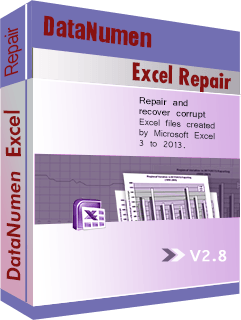Not many laypeople know how or what to do when they lose Excel files. This analysis explores the pertinent information that you need to prevent Excel data loss or to recover corrupt Excel files.
You’ve been working on this workbook all night and you’re supposed to present it to your boss first thing in the morning. There’s only one problem, all your work is lost. What could have happened? What are you going to do?
Below are some situations that could have led to this.
- Merging cells with data in them- when you merge two or more cells to make one big cell, only the data in the top left cell is displayed. The rest of the data from the other cells is automatically deleted.
- Not saving work- unsaved work is one of the most common reasons why people lose their data. You’re probably exhausted by the time you finish your spreadsheet and just quickly close the Excel window and ignore the dialogue box prompting you to save the work.
- Power outages- This is especially more likely to cause data loss if you are using a desktop computer without a UPS. If there’s a sudden power failure when you are in the middle of your work, it’s likely to be lost the next time you start Windows. It’s therefore advisable to keep saving periodically, especially if you are handling a long document. Otherwise, it could all get lost at the last minute after hours of work.
- Saving workbooks in the wrong format- Different data types require to be saved in different formats. For example, Excel documents are often saved in the ‘.xls’ format. Saving in the wrong format, such as .txt, will make it disappear when you search in Excel.
- Hardware problems- your hardware, such as memory or RAM, could misbehave and cause Excel to stop working and lose your data in the process.
- System crash- It is not uncommon for the system to crash when you’re in the middle of your document. If unsaved, all progress will be lost.
What do you do now that your data is lost?
Essentially, Windows has autosave for a document that had been previously saved but is now being updated. It’stherefore likely that you will find it after your system crashes. What if you hadn’t saved this workbook at all?
Using Excel recover options
- On the File tab, click on ‘open.’
- On the top left, click on ‘Recent workbooks.’
- At the bottom, click on the ‘Recover unsaved workbooks’ button.
- Go through the list and look for your lost workbook.
- Double click on it to open it.
- It will open in Excel and you can now save it.
Using recovery software like DataNumen Excel Repair
This will help you,
- Recover lost workbooks that you can’t fix in Excel.
- When Microsoft Excel stops working.
- When Excel can’t recognize the format the workbook is saved in.
- If you see the error ‘the converter required to open this .xls document cannot be found.’
The above are just a few of many ways to recover your lost Excel data. However, if followed step by step, it would be enough to recover most Excel files.
